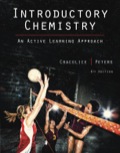
Interpretation:
For each name, the formula and for each formula the name is to be written: iodide ion, calcium ion, phosphide ion, Li+, S2-, Al3+.
Concept introduction:
Mostly, the elements are found as single atom particles in the universe. For example, the element which exists in the gas phase as single atoms at temperatures is Helium and the element which found in the solid phase is Lithium. The elemental symbol is used to denote this one atom elements and further explain that these atoms are uncombined in nature. The elements which are in between metals and non-metals are denoted as metalloids or semi metals. When atom accepts or loses electrons it is termed as ion. If the ion loses an electron and accepts a positive charge it is called as cation. Similarly, if the ion gains an electron and accepts a negative charge it is called an anion. When the ion is formed from a single atom, it is referred as monatomic ion.
Want to see the full answer?
Check out a sample textbook solution
Chapter 6 Solutions
EBK INTRODUCTORY CHEMISTRY: AN ACTIVE L
- What are the names of AgBr, SnF2, Fe2O3, and CuCl2?arrow_forwardWrite the anion names for the ions, F- ,S2- and O2-. A) The name of the ion F- is fluorite, S2- is sulfide, O2-is oxite. B) The name of the ion F- is fluoride, S2- is sulfate, O2-is oxite. C) The name of the ion F- is fluoride, S2- is sulfide, O2-is oxide. D) The name of the ion F- is fluorate, S2- is sulfite, O2-is oxide.arrow_forwardChoose the correct pair of formula-name. O P2C13 -Phosphorus dichloride O PCI3 -Phosphorus trichloride O P3CI3 -Phosphorus trichloride O P2CI3 - DiPhosphorus dichloridearrow_forward
- Table 7a: Formula → name formula Binary? Covalent or Polyatomic ion? Cation variable Name ionic or acid charge? What? Name? 1.Au(NO3)3 2. Сaз(РO,)2 3. Cl20 4. LiH No ionic Yes, Gold(II) Gold 111) Nitrate calcıumphosphate Dichbire monor ide. Lithiam Hudride. Sadiumchlorate Aluminunchlorde yes, Nklel TT) NIckel (u) Cyanide Yes, nitrate NO NO yes 1onic Covalent loniç Tonic onic lonic Covalent yıs,phosphate NO NO NO yeschlorate NO NO 5. NaCIO3 6. AICI3 7. Ni(CN)2 8. P4O10 9. SnSO3 10. (NH4)2CO3 11. CrO3 12. Ba(C2H3O2)2 13. ICI5 NO ves NO yes Nes,cuanide NO lonic Yes NO Ammoniom Carbonate NO Barium Acetate lodıne pentachloride Lead iv) Sultide |calcium phosphate NO lonic yes 14. PbS2 15. СазРО:)2 yes lonic Jonic yes NO no yesarrow_forward2. Give the formula and name of an ionic compound containing (a) the sulfate ion, (b) the nitrite ion.arrow_forwardWrite the formulas for the ionic compounds formed between these ions and name the compound. Make sure you account for the correct number of ions (or polyatomic ions) when writing the formulas. Use the formula method: the charge on one becomes the subscript of the other. b.) Iodide ion and magnesium ion: Mg2+ + I - = c.) Calcium ion and Sulfate ion: Ca2+ + SO₄2- = d.) Iron (II) ion and phosphate ion: Fe2+ + PO₄3- = e.) Ammonium ion and phosphate ion: NH₄+ + PO₄3- =arrow_forward
 Introductory Chemistry: An Active Learning Approa...ChemistryISBN:9781305079250Author:Mark S. Cracolice, Ed PetersPublisher:Cengage Learning
Introductory Chemistry: An Active Learning Approa...ChemistryISBN:9781305079250Author:Mark S. Cracolice, Ed PetersPublisher:Cengage Learning Chemistry: The Molecular ScienceChemistryISBN:9781285199047Author:John W. Moore, Conrad L. StanitskiPublisher:Cengage Learning
Chemistry: The Molecular ScienceChemistryISBN:9781285199047Author:John W. Moore, Conrad L. StanitskiPublisher:Cengage Learning Chemistry & Chemical ReactivityChemistryISBN:9781133949640Author:John C. Kotz, Paul M. Treichel, John Townsend, David TreichelPublisher:Cengage Learning
Chemistry & Chemical ReactivityChemistryISBN:9781133949640Author:John C. Kotz, Paul M. Treichel, John Townsend, David TreichelPublisher:Cengage Learning World of Chemistry, 3rd editionChemistryISBN:9781133109655Author:Steven S. Zumdahl, Susan L. Zumdahl, Donald J. DeCostePublisher:Brooks / Cole / Cengage Learning
World of Chemistry, 3rd editionChemistryISBN:9781133109655Author:Steven S. Zumdahl, Susan L. Zumdahl, Donald J. DeCostePublisher:Brooks / Cole / Cengage Learning Chemistry: Principles and PracticeChemistryISBN:9780534420123Author:Daniel L. Reger, Scott R. Goode, David W. Ball, Edward MercerPublisher:Cengage Learning
Chemistry: Principles and PracticeChemistryISBN:9780534420123Author:Daniel L. Reger, Scott R. Goode, David W. Ball, Edward MercerPublisher:Cengage Learning Introductory Chemistry: A FoundationChemistryISBN:9781337399425Author:Steven S. Zumdahl, Donald J. DeCostePublisher:Cengage Learning
Introductory Chemistry: A FoundationChemistryISBN:9781337399425Author:Steven S. Zumdahl, Donald J. DeCostePublisher:Cengage Learning





